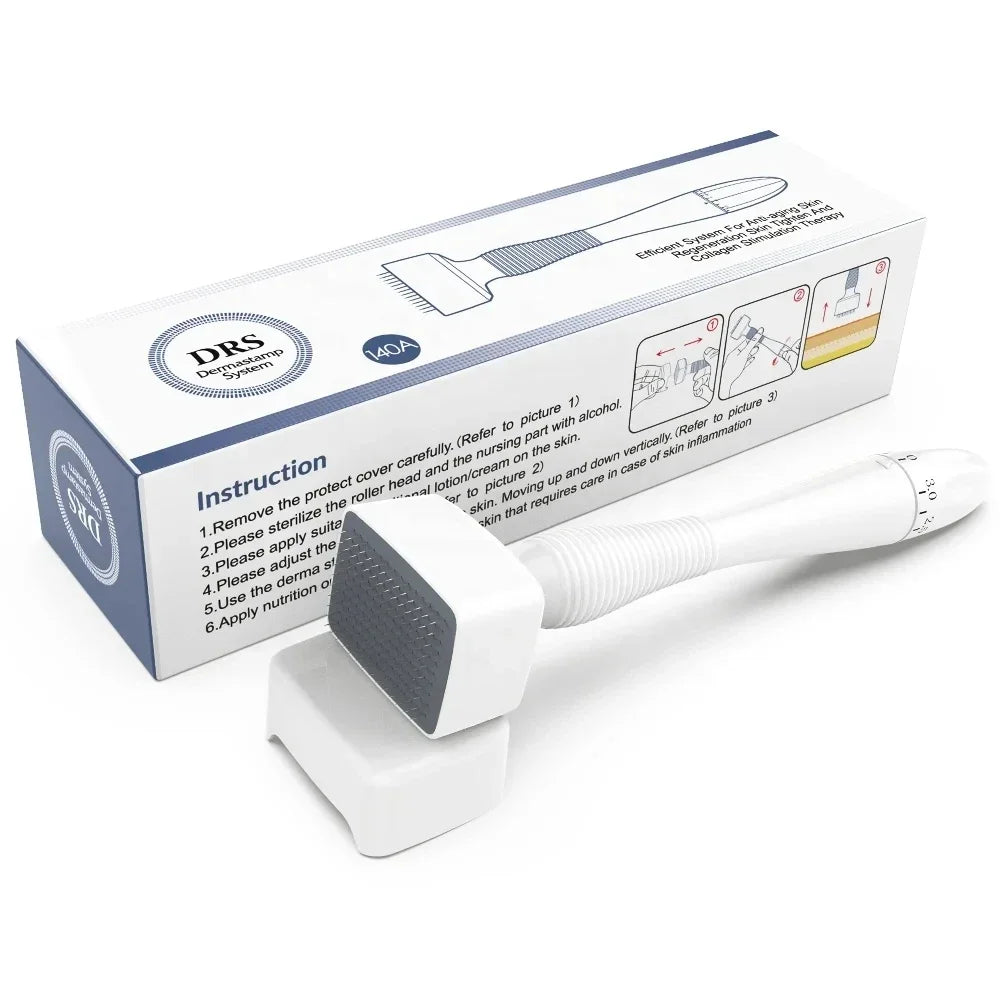
When to Switch from a Derma Roller to a Derma Stamp During Hair Regrowth
| MegaCityVip Studio
Microneedling has gained significant popularity as an effective method for stimulating hair regrowth. By creating controlled micro-injuries on the scalp, it helps increase blood flow and boost the production of growth factors that encourage hair follicles to regenerate. Two of the most common tools used for this purpose are the derma roller and the derma stamp. While both work similarly, they differ in design and application.
If you’ve been using a derma roller and have started noticing hair regrowth, you might wonder when it’s time to switch to a derma stamp. In this blog, we’ll explore the ideal timing for making that transition, and why a derma stamp can be beneficial as your hair starts to regrow.
Why Start with a Derma Roller?
A derma roller, with its rolling cylindrical head covered in tiny needles, is perfect for covering larger areas of the scalp. This makes it a good starting tool for those who are experiencing widespread hair thinning or early-stage hair loss. The roller's design allows for even distribution of the micro-injuries over large sections of the scalp, effectively stimulating the entire area.
Signs It’s Time to Switch to a Derma Stamp
As your hair regrows, your microneedling strategy may need to change to avoid damaging the new hair and to target areas that still need stimulation. Here are the key signs that it’s time to switch from a derma roller to a derma stamp:
1. Visible Hair Regrowth
When you start to see signs of new hair growth, it’s an indication that the microneedling is working. At this point, switching to a derma stamp can be beneficial. Since a derma stamp offers more precision, you can focus on areas where the hair is still thin or sparse while avoiding unnecessary trauma to the regions where hair has already started to regrow.
2. Treating Smaller, Targeted Areas
As hair regrows, certain areas like the hairline or crown may still need more attention. A derma stamp is perfect for this because it allows for targeted treatment. Unlike a derma roller, which covers larger surface areas, the stamp can be applied directly to the areas that need additional stimulation without disturbing the rest of your scalp.
3. Avoiding Damage to New Hair
One potential downside of continuing to use a derma roller after hair has started to regrow is that the rolling action might pull or damage the new, fragile hair strands. Since a derma stamp is applied with a gentle stamping motion, it’s less likely to disrupt new hair and more suited for working around new growth.
4. For Sensitive or Irritated Scalp
As hair begins to grow back, your scalp may become more sensitive, and a derma roller’s more aggressive action may cause irritation. A derma stamp is gentler, entering and exiting the skin vertically without dragging across the scalp. If you’re experiencing increased sensitivity, switching to a derma stamp can help minimize discomfort while still promoting hair regrowth.
5. For Reduced Overall Trauma
A derma stamp causes less trauma because of its vertical needle penetration. When using a derma roller, the needles enter the skin at an angle, which can be more disruptive to both the scalp and hair follicles. The stamp, however, penetrates straight down, creating less tissue damage while still encouraging blood flow and collagen production. This makes it a better option as your hair thickens and your scalp heals.
Benefits of Switching to a Derma Stamp
The shift to a derma stamp can provide several advantages as your hair regrows:
- Precision: You can focus on small areas that need more attention without affecting surrounding skin or newly regrown hair.
- Less Disruption: The stamp causes less trauma to the scalp and doesn’t drag through new hair, reducing the risk of pulling or damaging fragile strands.
- Gentler on Sensitive Areas: As hair starts to regrow, the scalp may become more sensitive. The stamping action is less likely to irritate these areas.
- Reduced Healing Time: Since the stamp creates less overall trauma, your scalp may heal faster after each microneedling session.
How to Transition from a Derma Roller to a Derma Stamp
If you’ve been consistently using a derma roller and want to transition to a derma stamp, follow these steps for a smooth switch:
- Assess Your Hair Regrowth: Pay attention to areas where hair is starting to come back, and identify spots that still need more stimulation.
- Start with Spot Treatments: Use the derma stamp on areas that remain thin, like the hairline, crown, or other specific patches of the scalp.
- Maintain a Consistent Routine: Just as with a derma roller, consistency is key. Use the derma stamp at regular intervals, typically once every 1-2 weeks depending on the needle size and your scalp’s sensitivity.
- Combine with Scalp Care Products: After microneedling, apply hair growth serums or topical treatments to enhance results. The micro-channels created by the stamp can help these products penetrate more effectively.
Conclusion
Switching from a derma roller to a derma stamp can be a game-changer once your hair starts to regrow. A derma stamp’s precision and gentleness make it ideal for targeting areas that still need attention while protecting new, fragile hair from damage. By transitioning at the right time, you can continue to promote healthy hair growth without unnecessary irritation or trauma.
Whether you're at the early stages of regrowth or further along in your hair restoration journey, understanding when to make this switch will help maximize the benefits of microneedling and keep your scalp and hair in their best condition.

Commentez
Your email address will not be published.